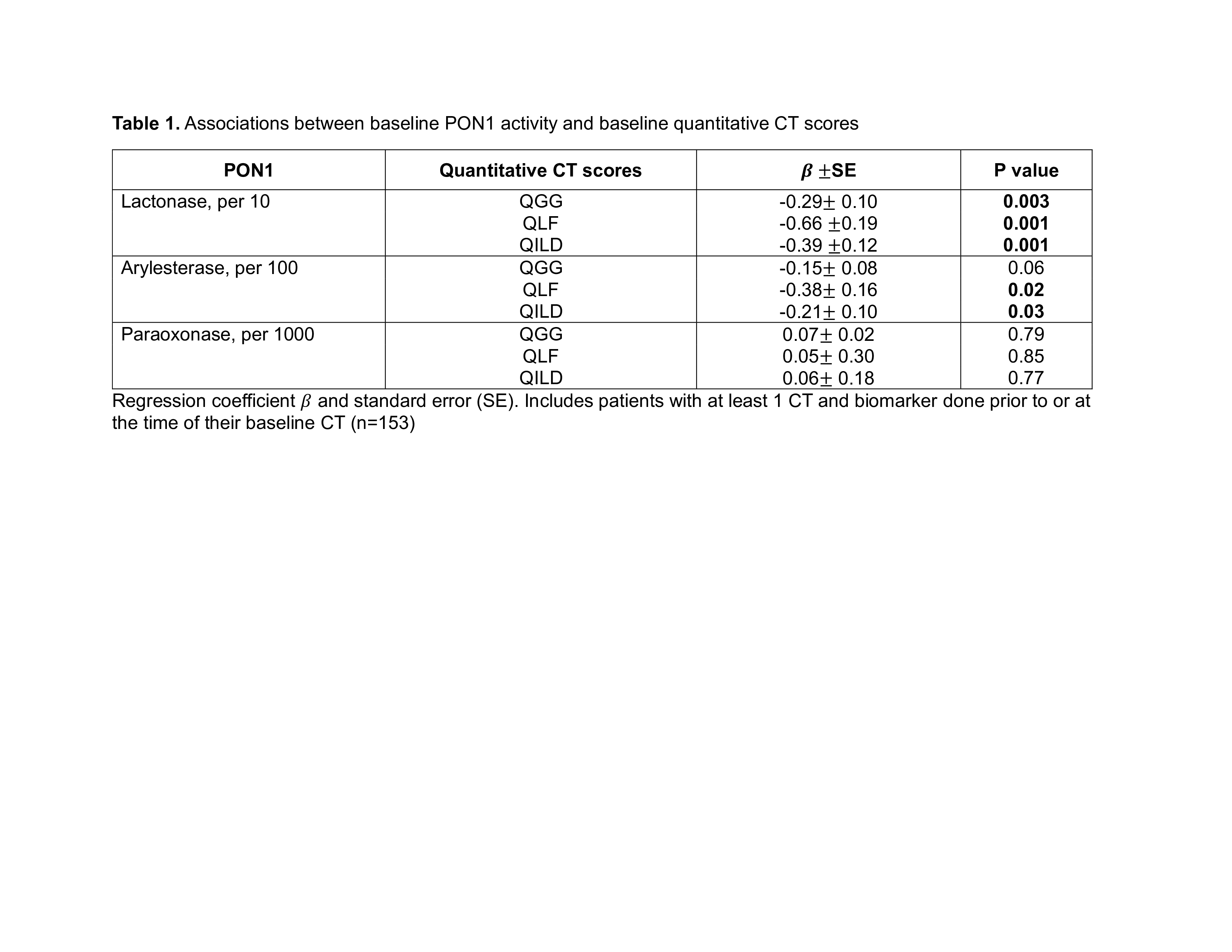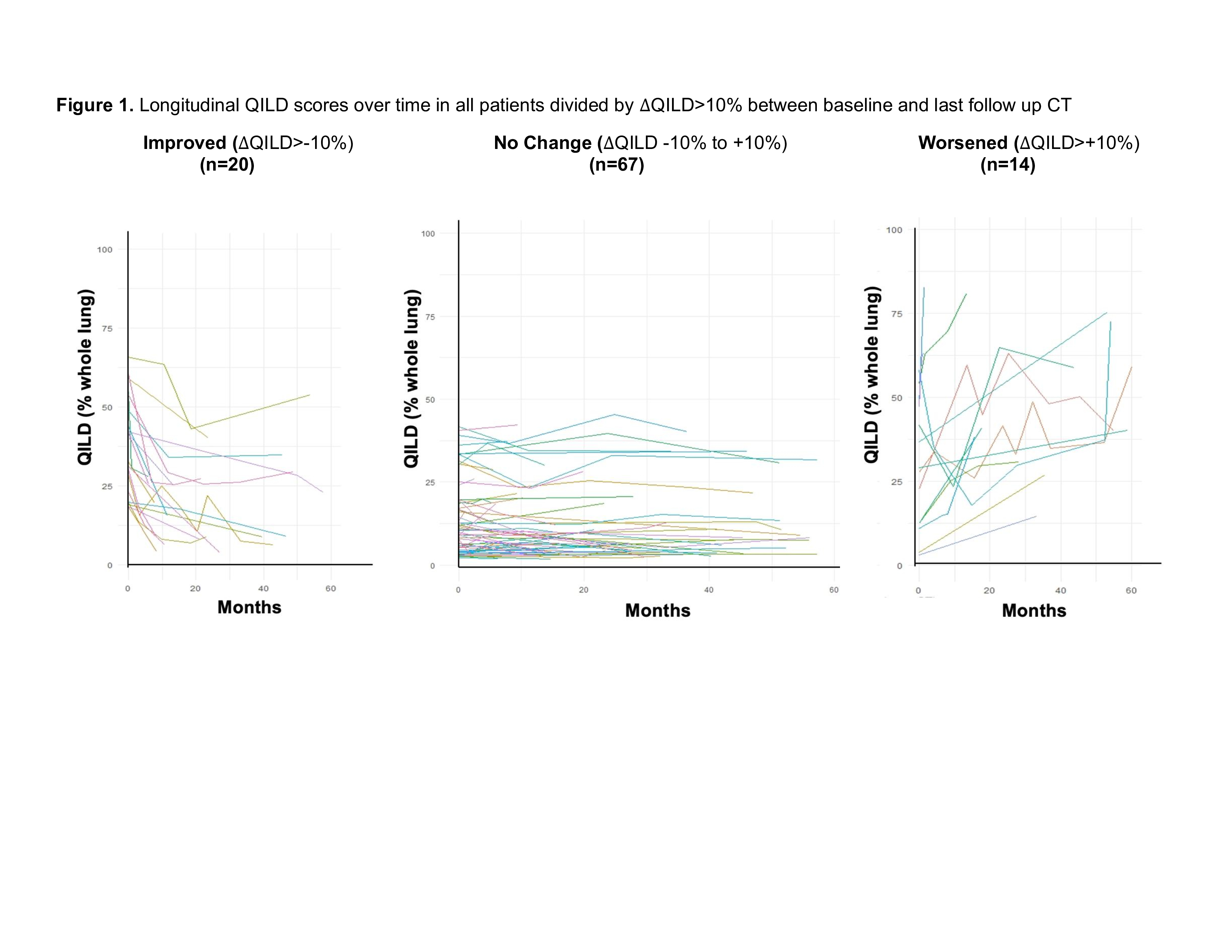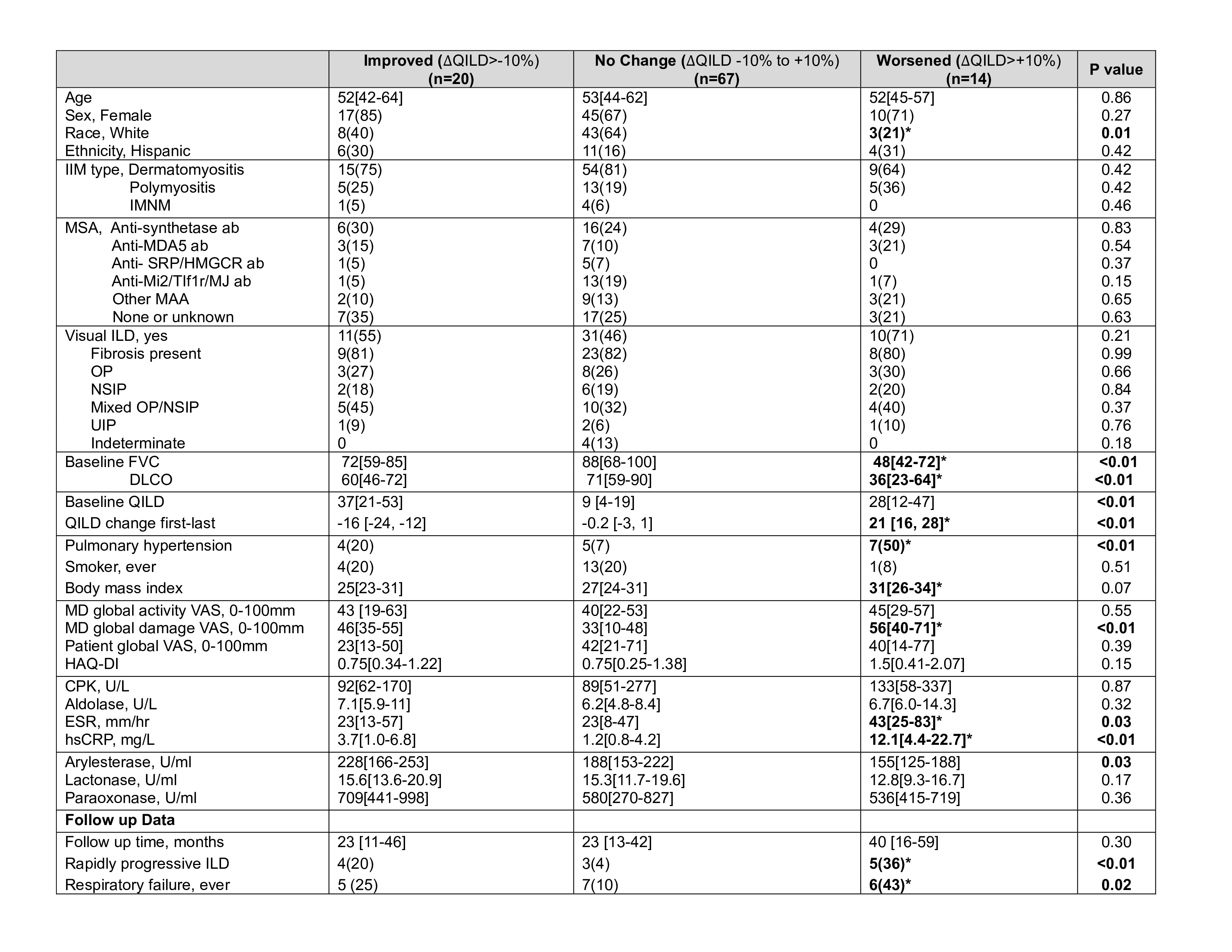Session Information
Date: Saturday, November 16, 2024
Title: Muscle Biology, Myositis & Myopathies – Basic & Clinical Science Poster I
Session Type: Poster Session A
Session Time: 10:30AM-12:30PM
Background/Purpose: Interstitial lung disease (ILD) is a major cause of mortality in idiopathic inflammatory myopathies (IIM), and high-resolution computed tomography (HRCT) is a key modality in evaluating ILD. Quantitative imaging analysis (QIA) provides computer-aided quantification of the extent of ground glass (QGG), fibrotic patterns (QLF) and a sum of all parenchymal abnormalities from ILD (QILD) to allow for reproducible quantitation over time. Paraoxonase 1 (PON1) is a high-density lipoprotein (HDL) associated protein that protects the vascular endothelium from oxidative injury, and impaired PON1 activity associates with IIM disease activity and with the presence of severe IIM-ILD. The current work aims to identify predictors of long-term radiographic changes in IIM including the predictive value of PON1.
Methods: QIA was performed on IIM patients from a single center longitudinal cohort. Patients with thin-section, non-contrast scans were included. HRCTs were also visually reviewed by an expert group to determine the presence and pattern of ILD. Baseline predictors including PON1 enzyme activity (measured by arylesterase, lactonase, and paraoxonase activities [Charles 2020 PMID:33033318]) were analyzed from visit dates prior to or at the time of the baseline CT. We used mixed-effects linear models to analyze the association between baseline PON1 activity and QIA scores over time. Patients were divided into 3 groups based on QILD score change between baseline and last follow up (ΔQILD) as follows: worsened (increased ΔQILD >10% of the whole lung; stable (10% increase to 10% decrease); improved ( > -10%). Baseline predictors were compared between the groups.
Results: Patients with PON1 activity available before or at the time of their baseline CT were analyzed (n=153). Lower arylesterase and lactonase activity of PON1 at baseline associated with greater extent of fibrotic disease (QLF) and total ILD (QILD) in baseline HRCTs (Table 1). The relationship between PON1 and QIA scores did not change with longitudinal QIA scores (interaction with time p=NS for all).
Among patients with at least 2 scans with QIA (baseline and follow up, n=101), 14 (14%) patients had worsened and 20 (20%) had improved ΔQILD by >10% (Figure 1). Patients with worsened QILD had the lowest PON1 activity at baseline by all 3 assays when compared to patients with stable or improved QILD; the difference was statistically significant with the arylesterase activity assessment (Table 2). Worsened QILD patients were more frequently of non-white race, had worse baseline restrictive physiology, higher prevalence of pulmonary hypertension and higher BMI. Greater MD global damage scores and higher markers of inflammation at baseline were also associated with worsened QILD. Among patients with ILD (n=52), 21% had improved QILD and 19% had worsened QILD, while 60% remained stable on their last follow up CT.
Conclusion: Patients with worsened QILD by >10% on follow up CT had worse restrictive lung physiology, higher inflammatory markers and lower arylesterase activity of PON1 at baseline. Lower PON1 arylesterase and lactonase activity also correlated with higher QLF and QILD scores at baseline.
P value is from Kruskall-Wallis test between 3 groups
*represents p<0.05 comparing Worsened group to Improved/No change group
Improvement and worsening was defined as difference in QILD by >10 % of whole lung from baseline to last follow up CT
Arylesterase, lactonase, arylesterase were done in 89/101 patients
To cite this abstract in AMA style:
Bae S, Macrovic D, Chung A, Channick J, Oh A, Wang J, Shahbazian A, De Leon T, Lee Y, Kim G, Tashkin D, Goldin J, Charles-Schoeman c. Predictors of Long-term Radiographic Changes in Patients with Idiopathic Inflammatory Myopathies Using Quantitative Imaging Analysis: Real World Experience from a Single Center Longitudinal Cohort [abstract]. Arthritis Rheumatol. 2024; 76 (suppl 9). https://acrabstracts.org/abstract/predictors-of-long-term-radiographic-changes-in-patients-with-idiopathic-inflammatory-myopathies-using-quantitative-imaging-analysis-real-world-experience-from-a-single-center-longitudinal-cohort/. Accessed .« Back to ACR Convergence 2024
ACR Meeting Abstracts - https://acrabstracts.org/abstract/predictors-of-long-term-radiographic-changes-in-patients-with-idiopathic-inflammatory-myopathies-using-quantitative-imaging-analysis-real-world-experience-from-a-single-center-longitudinal-cohort/



